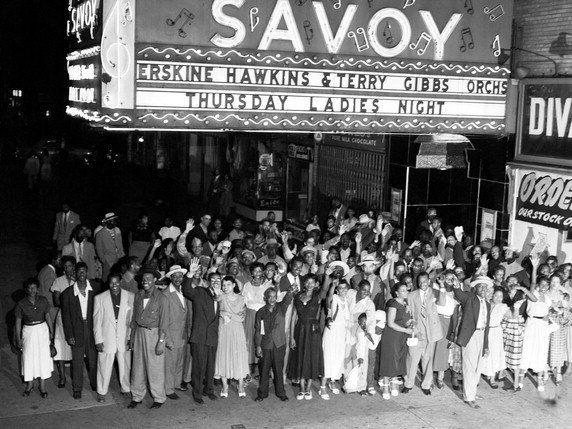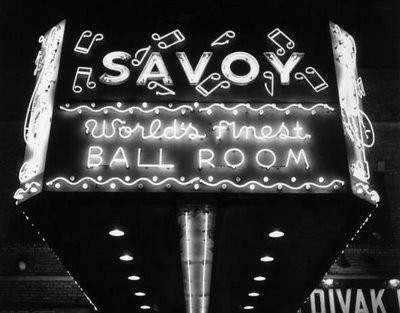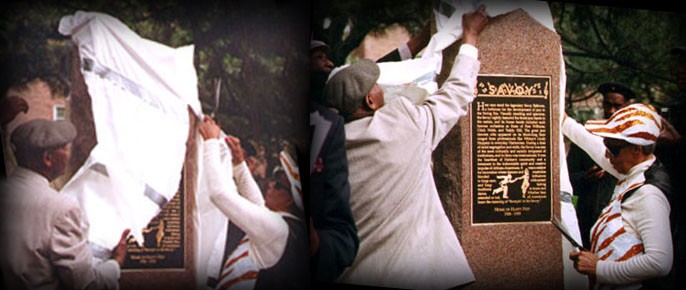Savoy Ballroom, Harlem 1926-1958
Introduction
Text-to-speech Audio
The Savoy Ballroom was opened on March 12, 1926, between 140th and 141st Streets. It was owned by a local Jewish mobster named Moe Gale and his business partner, Jay Faggen. However, the actual ballroom was run by Charles Buchanan, who was an African-American businessman. While establishments like the Cotton Club drew the color line, the Savoy belonged to the Black community and was open to all. The Savoy was one of the first establishments in the city to not only allow but welcome both white and Black guests. This was a tremendous risk at the time and oral histories recall how the owner panicked when no patrons arrived when he opened the doors on his first night. Within two hours, the Savoy had a crowd of hundreds of patrons. The Savoy was best-known for its music and its dancers and is historically significant as a Black institution that was open to all.
Images
The Savoy was one of the cultural hubs of Harlem from the 1920s to the 1950s.

The Savoy Ballroom marquee announced the arrival of some of the most influential entertainers of the 20th century.

Frankie Manning and Norma Miller unveil the historical marker for the Savoy in 2002. The marker is on the west side of Lennox Ave/Malcolm X halfway between 140th and 141st streets.

Backstory and Context
Text-to-speech Audio
Opened in 1926, the Savoy Ballroom emerged during the Harlem Renaissance - a time where Harlem served as the cultural center of the African-American community. The musical tradition of the African-American community particularly thrived during this time, and Savoy served as a creative hub for those involved in the movement. Savoy was owned by Jay Faggen and Moe Gale, who was a well-known Jewish mobster, but the Ballroom was run by Charles Buchanan, who was an African-American businessman.
Savoy was unique because it was one of the first places in the United States to allow integration between Blacks and whites. This was a highly successful idea, as guests of both races flooded the Ballroom from night to night. The success of Savoy was often credited to both great music and a safe environment. Savoy used bodyguards, who were ex-athletes, to ensure no violence occurred inside the club.
Savoy was most known for its dancers. The Savoy Dancers helped revolutionize dancing across the nation. Popular dances that came out of Savoy included the Flying Charleston, The Big Apple, The Stomp, Snakehips, Peckin', and Rhumboogie. There were two popular Savoy Dance troupes, in particular, that left their mark on the dance world. The first, the Savoy Lindy Hoppers, was created by George Snowden. Members included Mattie Purnell, Leroy "Stretch" Jones, and "Twistmouth George" Ganaway. The second troupe, Whitley's Lindy Hoppers, was created by a Savoy bodyguard named Herbert White. He was known for helping Savoy stars make a name for themselves in film and television.
After years of up and down business, the Savoy closed in 1958, with hopes of a reopening. However, the building was torn down in 1959 to make room for a housing development. A commemorative plaque was put up in 2002 between 140th and 141st Streets.
Sources
"Savoy Ballroom." Road Trippers. Accessed Web, 7/6/17. https://roadtrippers.com/us/new-york-ny/points-of-interest/savoy-ballroom.
"About the Savoy Ballroom." Savoy Plaque. Accessed Web, 7/6/17. http://www.savoyplaque.org/about_savoy.htm.
Stern, Carrie. "Savoy Ballroom." Dance Heritage Coalition. Accessed Web, 7/6/17. http://www.danceheritage.org/treasures/savoy_essay_stern.pdf.
